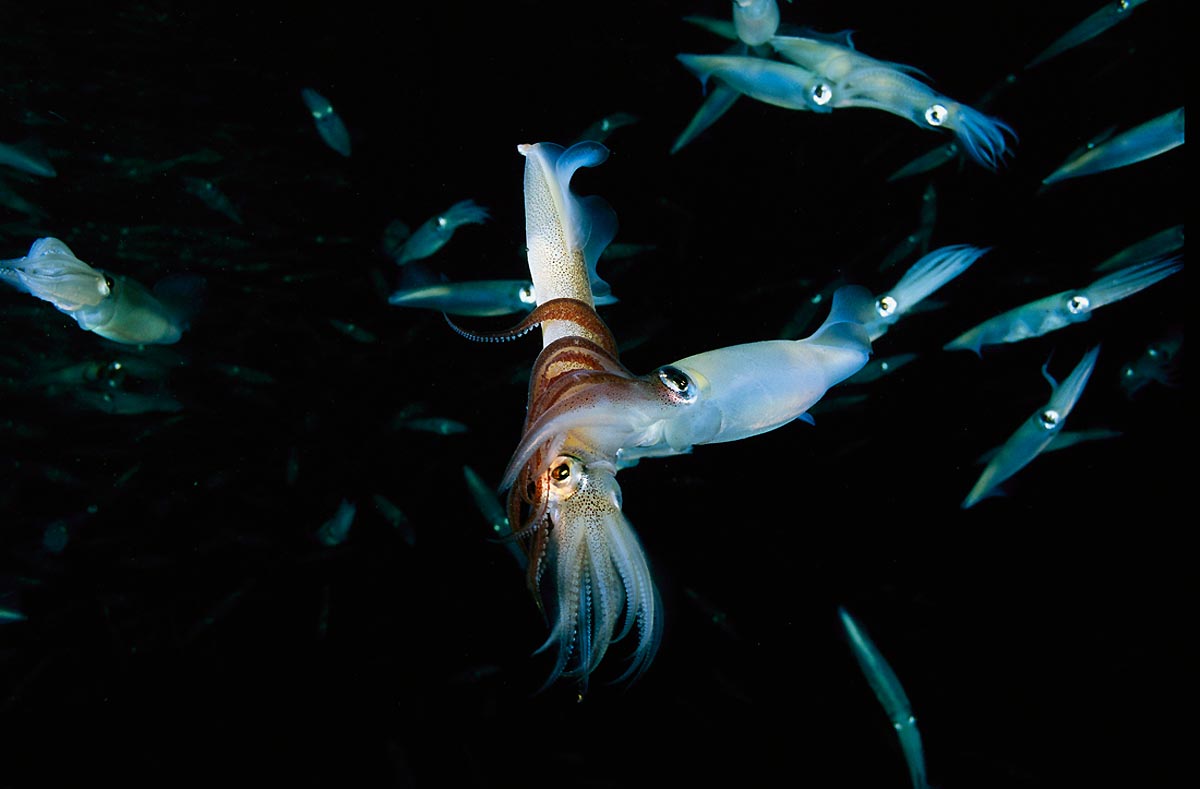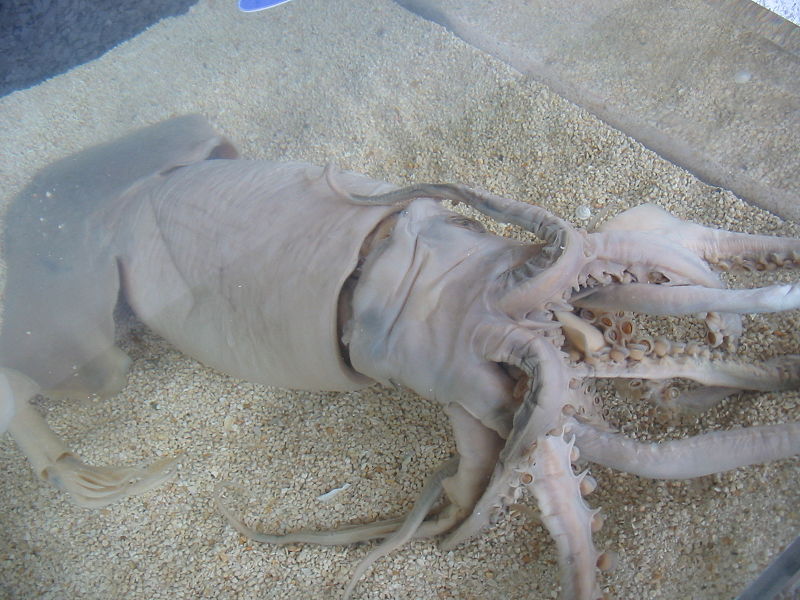
Reproduction
Experts know little about how jumbo squid spawn, in
large part because the squid spend most of their lives at depths
unsafe for diving. Their eggs have never been observed in nature.
Like most cephalopods, Humboldt squid reproduce only once in
their lifetime! Since there is little known about how D. gigas
reproduces, there a have been a few theories. One theory is their
color changing ability may be a factor for mating, the males may
engage in it to get the females attention. It is also believed that
they lay their eggs on the ocean floor like other squid do, just at
unsafe diving depths so we can not get a clear look at what actually
happens. Like most cephalopods, D.gigas exhibits semelparous
reproduction, meaning they reproduce once in their lifetimes and die
shortly after. After slightly more than 200 days, both the male and
the female will reach sexual maturity, and then be capable of
reproducing.

Spawning extends throughout the year, but the most
important spawning peak occurs from October to January. Although no
courtship display of any kind have been documented between mating
Humboldt squids, it is thought that given their developed brain,
complex eyes, and chromatophore arrays, some type of courtship
ritual is highly likely. When mating, fertilization takes place
inside the females. The two squids intertwine tentacles, and the
male places its spermatophores inside the buccal (oral) membrane of
the female
(eol.org). After large egg masses containing up to 2 million
eggs are produced, the female engages in no further parental
investment. This is mainly because like most other cephalopods, the
Humboldt dies shortly after producing their eggs.
